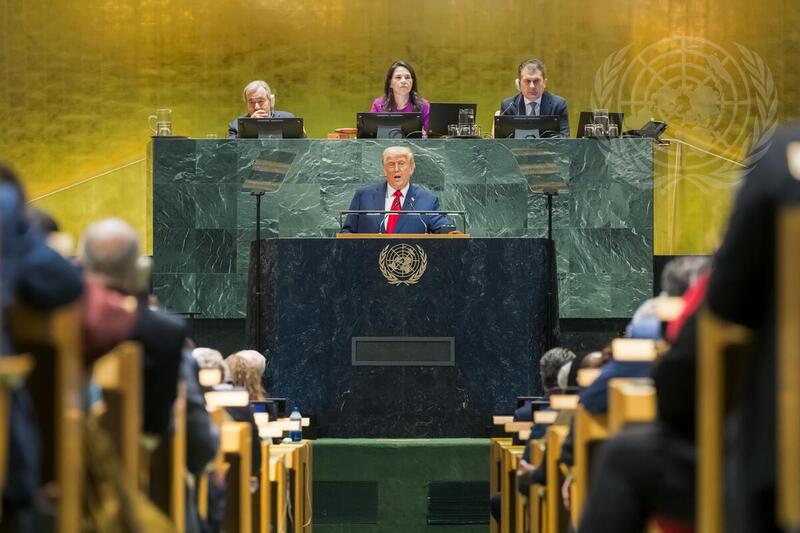Amid so many calamities in the world—most of them caused or fueled by their own government—the US public has been avidly following the news surrounding Jeffrey Epstein’s obsession with the bodies of girls and young women. His sex trafficking ring appears to involve some of the most influential men in the world.
Donald Trump, a close friend of Epstein’s for decades, is scrambling to protect himself from what the Epstein files might reveal. After years of alluding to the sexual abuse of women as if it were a joke and dodging prosecution despite the testimony of dozens of women who suffered sexual abuse from the now-president, Trump suddenly doesn’t think it’s so funny. He faces a rebellion among his MAGA base for withholding information in the Epstien files—information he explicitly promised them during his campaign.
It’s encouraging to see that there is still a political culture in the U.S. capable of condemning sex trafficking of girls and women, even if it touches the president. However, there’s another, largely overlooked, obsession that also destroys lives, violates laws and human dignity, and is carried out openly with impunity from a position of power.
It’s the Trump administration’s obsession with migrants.
From the first day of his administration, Trump has taken action after action against the very existence of migrant families in the country. Measures such as denying the right to asylum, attempting to eliminate the right to citizenship for babies born in the US to migrant mothers, and deporting migrants with legal status go beyond any pretext of protecting the borders from migrants, who, incidentally, have never posed a threat to national security. }
These actions reflect a complete disregard for history and for an important sector of the country’s society and economy. They also project a future of outright white supremacy and oligarchic domination. Although the courts have declared many of these anti-immigrant measures illegal, the message of fear, uncertainty, and repression has taken root in migrant communities and in communities where migrants and non-migrants have lived together for centuries.
Anti-immigrant rhetoric has become so commonplace that we sometimes forget to ask a key question: Why this viciousness against migrants? Or to be more precise, why this viciousness against migrants from the Global South by the U.S. government?
Years ago, when the right wing began systematically employing anti-immigrant rhetoric, we saw it as a “wedge issue”—a topic that is not necessarily central to the political agenda, but that serves to divide the population between ‘them’ and “us” for electoral purposes and to mobilize a conservative base. The anti-immigrant message taps into deep veins of racism and xenophobia in U.S. society. It also has the advantage for elites of diverting discontent over job, cultural, and social insecurity from the wealthy toward a group of people redefined as the “internal enemy.”
Over the years, rhetoric against people who migrate from the Global South to the Global North has become an integral part of the far-right agenda. Trump is just one example.
Trump’s team exemplifies how emotional and strategic reasons intersect on the issue. For anti-immigrant czar, Stephen Miller, it’s a visceral hatred, as seen recently in his delusional vision of a paradaisical Los Angeles if it were purged of all immigrants. For Elon Musk and business leaders, it is the elimination of surplus (brown) labor in the transition to automation and further concentration of wealth upward.
For white supremacists, it is pure racism and revenge for what they call “the Great Replacement”—people of color supposedly supplanting white supremacy as if society were a zero-sum game of winners and losers. And for the Republican Party, it is about reducing a demographic that tends to vote Democrat. The overall goal is to change the structure of U.S. society long term. White women are assigned to reproduce by racist, right wing pro-natalists. Women of color are denied access to income and services for healthy childbearing and child-rearing and if they are immigrants they are imprisioned and expelled. The budget signed by Trump on July 4 allocates a record $170.1 billion for new spending on anti-immigrant measures.
The government claims it has achieved negative net migration in 2025, as if that were the goal of society. The boast hides the reality of broken families, terrified children and grieving parents, communities bereft of essential workers and the blatant promotion of hatred that has led to a sharp increase in hate crimes and mass killings againts immigrants, like the 2019 El Paso massacre during Trump’s first administration.
In June, the government announced that it had deported 207,000 people. In 2024, 271,484 were deported in the fiscal year. The figures so far do not represent a significant increase. What is indisputable is the increase in the number of people deprived of their liberty in detention centers—a 25% leap in the first six months of the Trump administration, reaching an average of 50,000.
If the goal is to reduce the migrant population in the country, why pay millions of taxpayer dollars in detention instead of deportation? Detention is much more expensive, goes against the demands of the countries of origin that are requesting the return of their citizens, and requires greater infrastructure that does not currently exist. In the context of an economy that is beginning to feel the consequences of cuts in health services, scientific research, environmental protection, and many other essential government services, and shortages and price increases of goods caused by tariffs, the policy of mass detention seems to make no sense.
I am not advocating either option. But the question is worth asking because the answer reveals the logic underlying everything Trump does. It’s profitable. Detention centers are operated by private companies that gobble up lucrative public sector contracts to imprison migrants in subhuman conditions. The owners donate millions of dollars to politicians’ campaigns. Just to give the most recent example, according to Bloomberg, the project to build a center to house migrants in tents at Fort Bliss, Texas, will cost U.S. taxpayers more than $1.2 billion in the contract awarded Acquisition Logistics LLC.
Epstein’s obsession left him dead in a cell in New York City. Trump’s obsession with migrants could also be his downfall. The latest polls show greater rejection of anti-migrant measures, which many American citizens consider cruel. Gallup reports that 79% say immigration benefits the country, and only 35% approve of Trump’s immigration policies. The protests against the raids in Los Angeles are just the beginning of the demonstrations of discontent.
If resistance continues to grow, maybe even the rich and powerful will have to think twice before trampling on the rights and bodies of others for their own benefit.
This article was originally published in German in the September issue of the magazine Sudlink. Mira thanks the editors for permission to print the English version.



